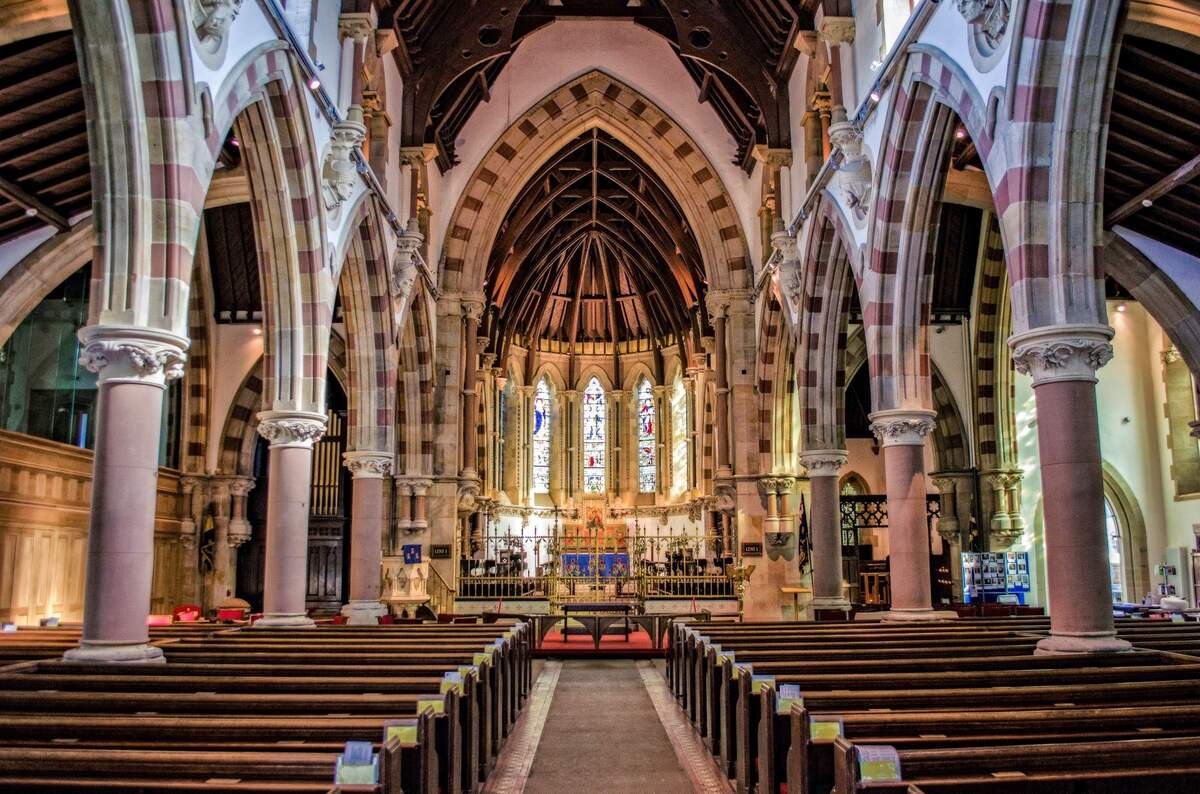

Saint Swithin's Day
Saint Swithin's Day is steeped in legend and is celebrated in the United Kingdom—although not widely. Saint Swithin (or Swithun) was born in Winchester, England, in about 800. He became counselor of the Saxon kings Egbert and Ethelwulf, and then Anglo-Saxon bishop of Winchester from 852 until his death in 862. He was originally buried in front of the Old Minster Cathedral—the cathedral that preceded the Winchester Cathedral—as he had requested. He wanted this to be his resting place so that rain would fall on his grave, and because "the feet of ordinary men could pass over him."
After becoming the patron saint of the cathedral's Benedictine monastery, his body was dug up on July 15, 971; his bones were placed in a reliquary and he was buried in a shrine inside the cathedral. This was seen as going against Swithin's wishes, and legend has it that it then rained over the cathedral for 40 days—a sign of heaven's anger at the reburial. The earliest reference of the weather on the day was in the thirteenth or fourteenth century, in a manuscript from Emmanuel College, Cambridge.
Saint Swithin's Day takes place on July 15, the day that his remains were moved. According to legend, whatever the weather is on that day, it is supposed to be the same for the next 40 days. If it is rain, then it will continue to rain; if it is sunny, the sun won't let up for 40 days. This is best summed up in a poem from shortly after the day began being observed:
St Swithin's day, if thou dost rain
For forty days it will remain
St Swithin's day, if thou be fair
For forty days 'twill rain na mairThe Royal Meteorological Society said there is no evidence that it has ever happened since records began being recorded. Although, in mid-July, the jet stream usually has a consistent pattern. If the jet stream is in the northern part of the United Kingdom, continental high pressure moves in and brings warmth and sunshine. It the jet stream is further south, Arctic and Atlantic weather systems bring colder and wetter weather. Still, there has never been 40 days without some sort of change in the weather.
And whatever became of the remains of Saint Swithin? After the current Winchester Cathedral was built in the eleventh century by the Normans, Swithin's reliquary was placed behind the altar. Many made pilgrimages to the site and believed his remains brought healing. In the sixteenth century, King Henry VIII took control of the Catholic Church in England and declared himself the leader of the Church of England. On September 21, 1538, the king's commissioners smashed up Swithin's shrine and took its valuables. Nothing remains of it today except a memorial.
How to Observe Saint Swithin's Day
Some informal events may take place in the United Kingdom, but there are no traditional celebrations. However, the day has made appearances in popular culture. For example, Billy Bragg named a song after it, and David Nicholl's book, One Day, features the day and may have been inspired by Bragg's song. Checking out the song and book may be convenient ways to celebrate the day, but the best way to celebrate is to visit the Winchester Cathedral and see the memorial shrine dedicated to Saint Swithin. You could then walk around outside and find the spot where the Old Minster cathedral stood, where Saint Swithin was originally buried outside of. Then observe the weather. Stick out your hand. Are there any raindrops? Look up. Is it sunny or cloudy? Whatever you observe is what the weather will be for the next 40 days. Well, maybe.





















